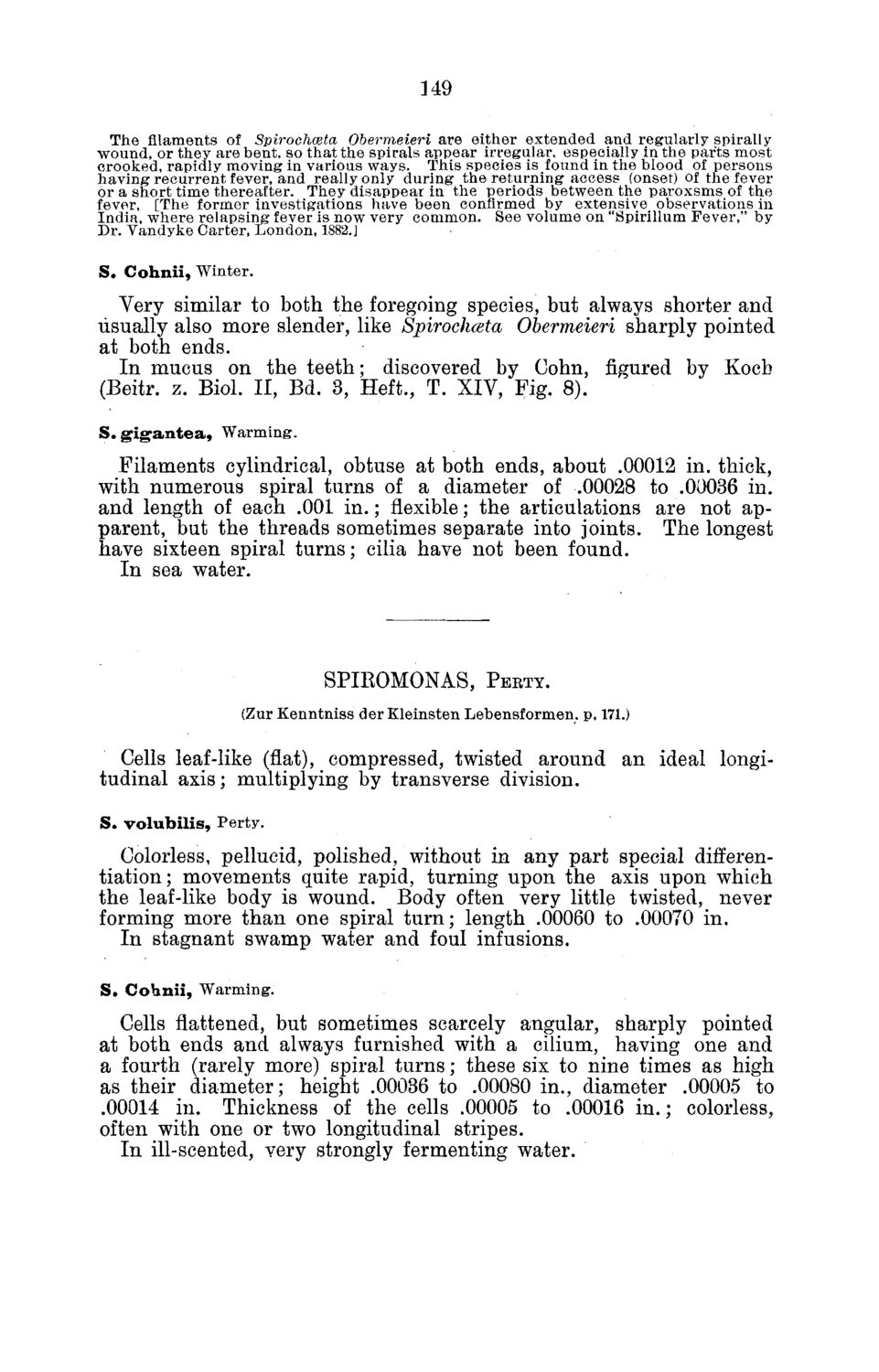| |
| |
Caption: Board of Trustees Minutes - 1882
This is a reduced-resolution page image for fast online browsing.

EXTRACTED TEXT FROM PAGE:
149 The filaments of Spirochceta Ohermeieri are either extended and regularly spirally wound, or they are bent, so that the spirals appear irregular, especially in the parts most crooked, rapidly moving in various ways. This species is found in the blood of persons having recurrent fever, and really only during the returning access (onset) of the fever or a short time thereafter. They disappear in the periods between the paroxsms of the fever, [The former investigations have been confirmed by extensive observations in India, where relapsing fever is now very common. See volume on "Spirillum Fever," by Dr. Vandyke Carter, London, 1882.J S. C o h n i i , Winter. Very similar to both the foregoing species, but always shorter and usually also more slender, like Spirochceta Ohermeieri sharply pointed at both ends. In mucus on the teeth; discovered by Cohn, figured by Koch (Beitr. z. Biol. II, Bd. 3, Heft., T. XIV, Fig. 8). S. g i g a n t e a , Warming. Filaments cylindrical, obtuse at both ends, about .00012 in. thick, with numerous spiral turns of a diameter of .00028 to .00036 in. and length of each .001 in.; flexible; the articulations are not apparent, but the threads sometimes separate into joints. The longest have sixteen spiral turns; cilia have not been found. In sea water. SPIROMONAS, PEBTY. (Zur Kenntniss der Kleinsten Lebensformen. p. 171.) Cells leaf-like (flat), compressed, twisted around an ideal longitudinal axis; multiplying by transverse division. S. v o l u b i l i s , Perty. Colorless, pellucid, polished, without in any part special differentiation; movements quite rapid, turning upon the axis upon which the leaf-like body is wound. Body often very little twisted, never forming more than one spiral turn; length .00060 to .00070 in. In stagnant swamp water and foul infusions. S. C o h n i i , Warming. Cells flattened, but sometimes scarcely angular, sharply pointed at both ends and always furnished with a cilium, having one and a fourth (rarely more) spiral turns; these six to nine times as high as their diameter; height .00036 to .00080 in., diameter .00005 to .00014 in. Thickness of the cells .00005 to .00016 in.; colorless, often with one or two longitudinal stripes. In ill-scented, very strongly fermenting water.
| |